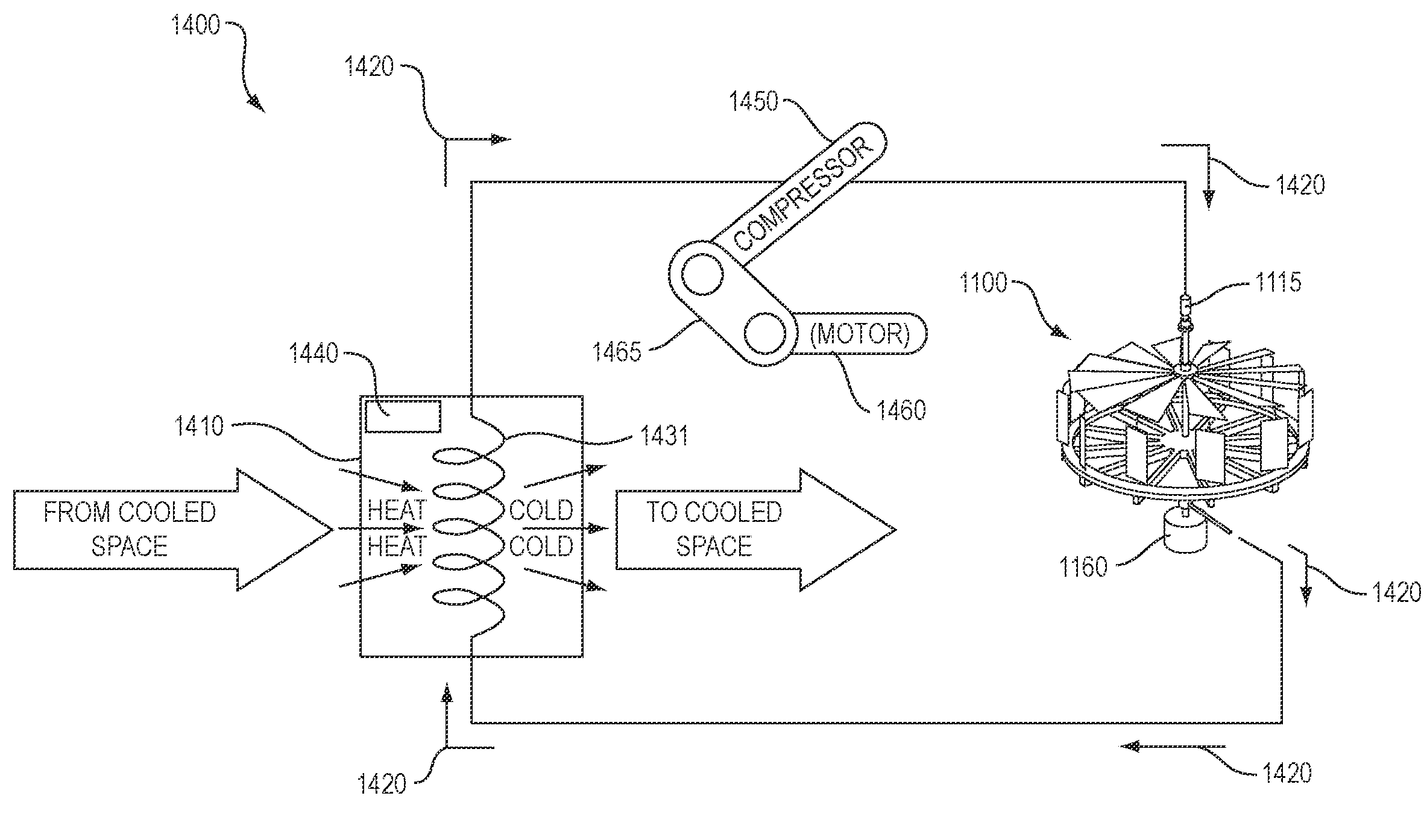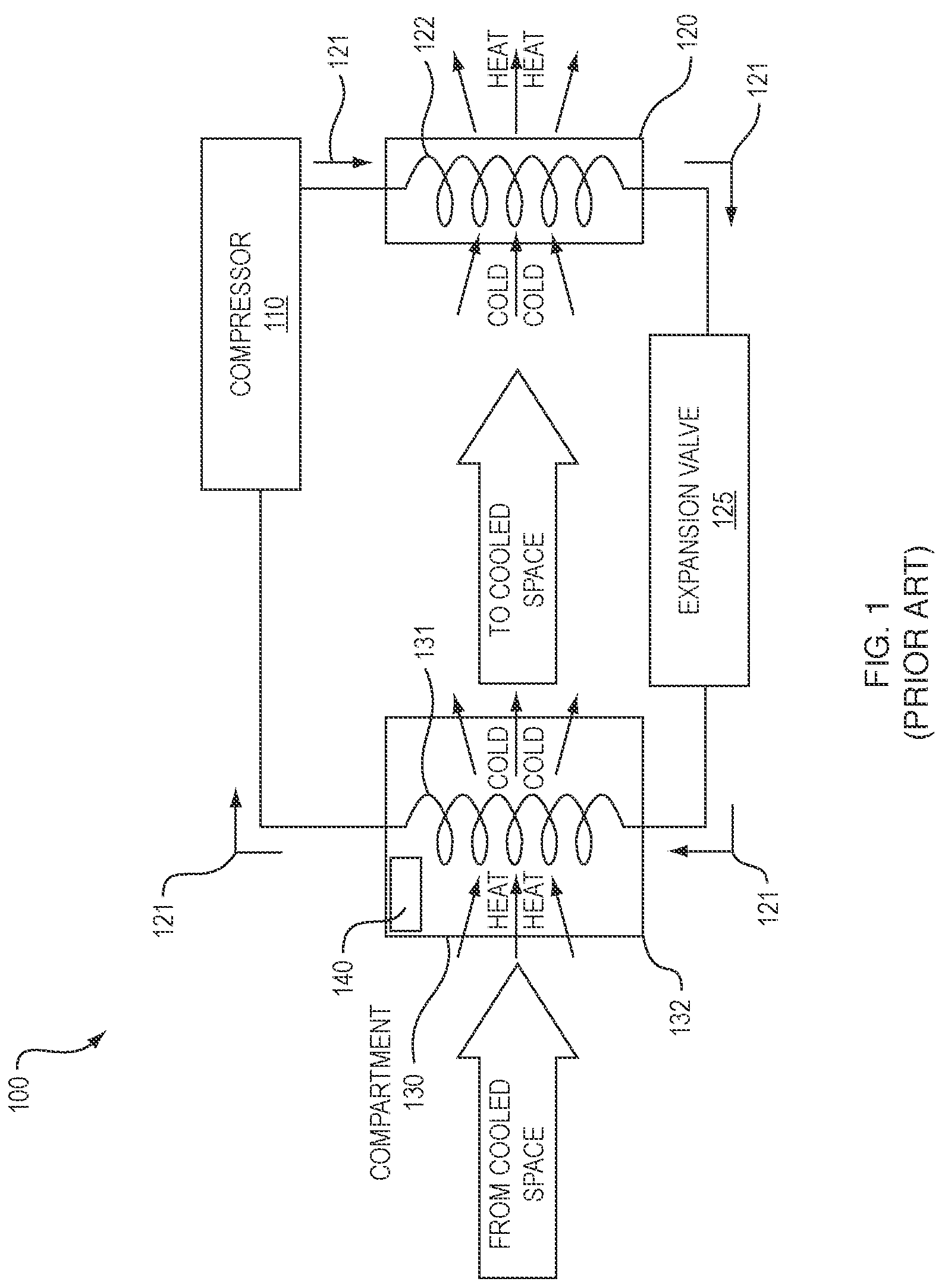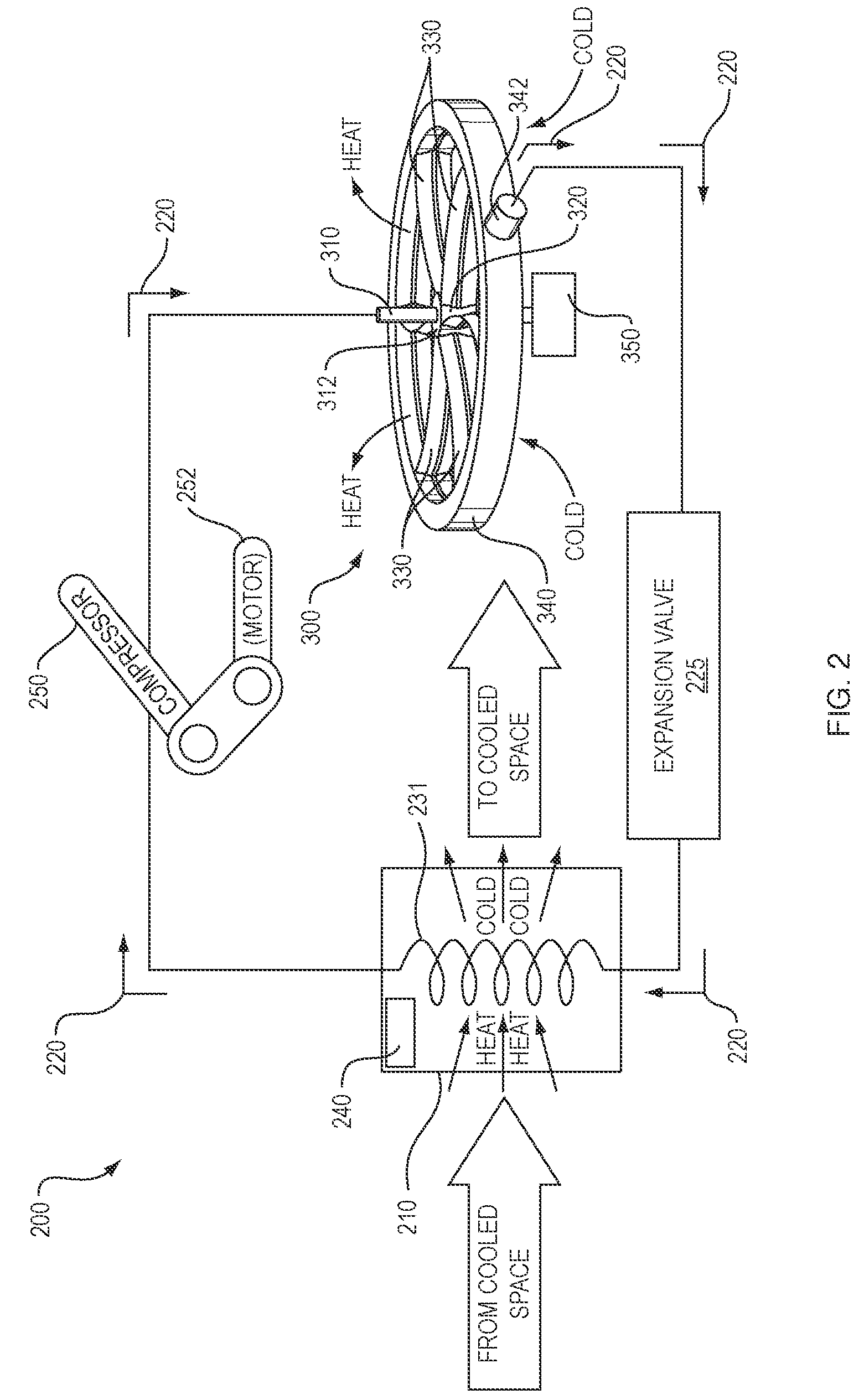Turbo-compressor-condenser-expander
a compressor and condenser technology, applied in the direction of machines/engines, liquid fuel engines, lighting and heating apparatus, etc., can solve the problems of reducing efficiency, increasing component count and cost, and reducing efficiency
- Summary
- Abstract
- Description
- Claims
- Application Information
AI Technical Summary
Benefits of technology
Problems solved by technology
Method used
Image
Examples
Embodiment Construction
[0040]In accordance with an illustrative embodiment, there is provided an isothermal turbocompressor (with or without an associated turbocondenser and turboexpander) for use in a refrigerant-based air-conditioning system. The system may be implemented for a variety of uses, including a refrigerator, air conditioner, heat pump, and other heating or cooling systems using a compressible refrigerant. The turbocompressor may also be used for the purpose of a more-energy-efficient method for compressing a gas prior to transportation by pipeline or by container. In such cases, the transported gas is broadly termed herein as “refrigerant”, and may be cooled without necessarily changing phase to a liquid. The device is termed a turbocompressor, because it compresses the refrigerant (gas, etc.) via the rotation of a wheel-like spoked turbo fan that will be described in detail below. Likewise, the optional additional components termed a “turbocondenser” and “turboexpander” are called such beca...
PUM
 Login to View More
Login to View More Abstract
Description
Claims
Application Information
 Login to View More
Login to View More - R&D
- Intellectual Property
- Life Sciences
- Materials
- Tech Scout
- Unparalleled Data Quality
- Higher Quality Content
- 60% Fewer Hallucinations
Browse by: Latest US Patents, China's latest patents, Technical Efficacy Thesaurus, Application Domain, Technology Topic, Popular Technical Reports.
© 2025 PatSnap. All rights reserved.Legal|Privacy policy|Modern Slavery Act Transparency Statement|Sitemap|About US| Contact US: help@patsnap.com



